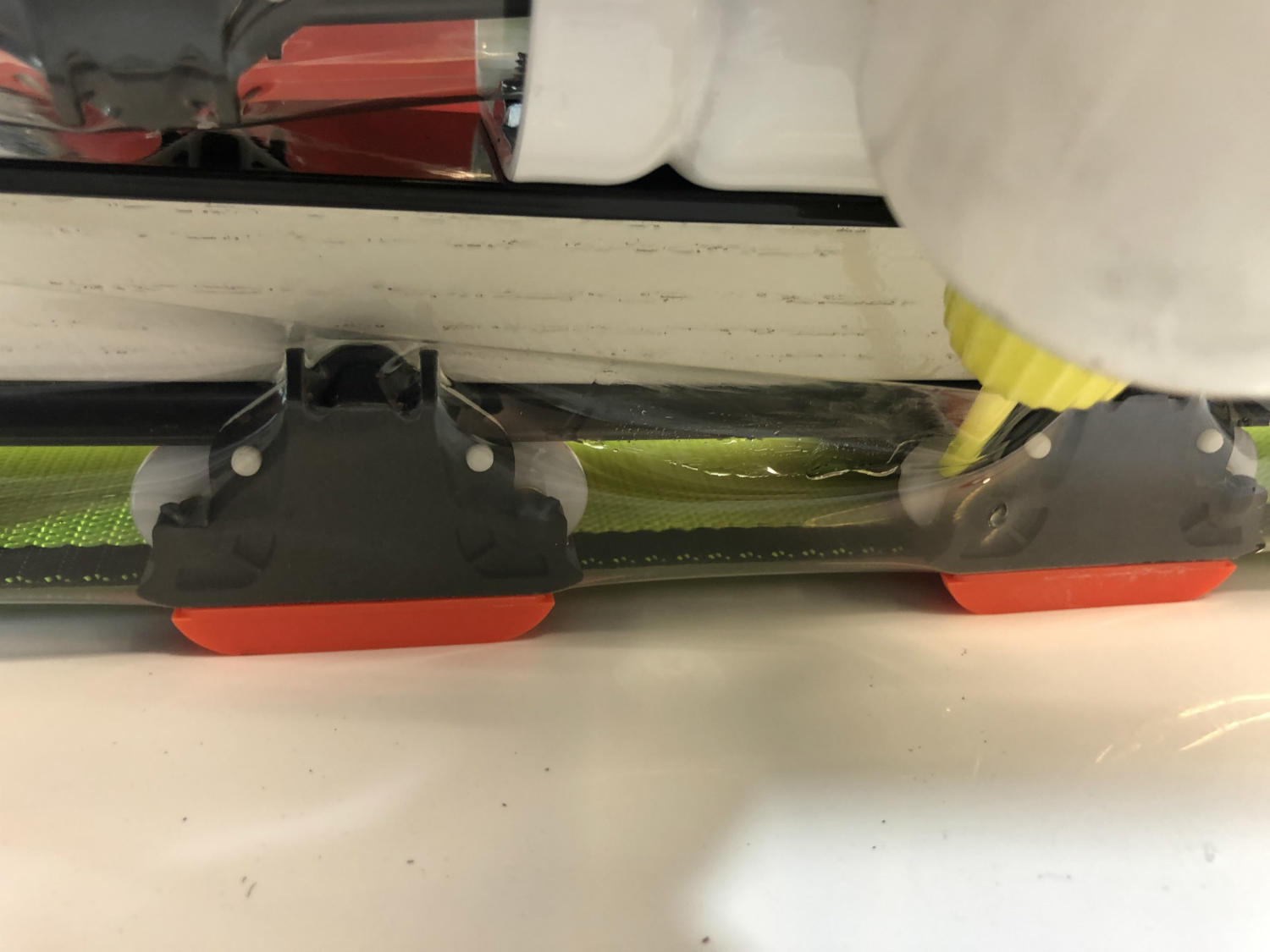Grasski maintenance
Before we delve into the details of grasski maintenance, let's familiarize ourselves with the names and terms we use for different parts of the grasski:
- Element or trolley
- Plate (serving as edge)
- Belt (connecting elements/trolleys on rail)
- Protectors
- Wood with alu layer
- Binding plate
- Binding supporting U
- Binding front (this one from race ski)
- Binding back (from race ski)
- Roll
- Gliding insert

Grasski oiling
Regular and careful maintenance is crucial for grasski, and it starts with lubricating the rolls. Each individual wheel should be lubricated using a manual pressure oiler every time you use the grasski. This helps minimize wear, extend the life of the grasski, and ensure smoother performance. Depending on how often you use the grasski, this lubrication process should be repeated several times throughout the day.
For lubrication, we recommend using biodegradable oils that are easy to wash and environmentally friendly, considering that grasski are used in natural environments. Biohydraulic oils with a viscosity of 46 are suitable for this purpose.
Without regular oiling, the rolls inside the skis may get worn or damaged to the extent that ski speed is affected. In such cases, it is necessary to replace all the rolls, which typically costs between 25€ to 50€ depending on the speed of the rolls. It is also recommended to check and replace the gliding inserts if needed.
Grasski washing
Unlike winter skis, grass skis are susceptible to dust, gravel, and sand. During skiing, especially when making aggressive turns or crashes, dirt and grass can accumulate in the rolls and slow down the ski. Therefore, regular washing is essential to maximize the performance of your skis.
To wash your skis, you will need a bucket, detergent, sponge, and water. Start by filling the bucket with water and adding detergent. Gradually wash one ski and then the other, using the sponge to remove dirt. Afterward, immerse the ski in the water and rotate it inside the bucket rapidly to dislodge any remaining dirt, mud, or grass from the rolls.
Once the initial washing is complete, replace the soapy water with clean water in the bucket. Rotate the ski inside the water to rinse off any detergent from the grasski and rolls.
After washing, rotate the ski several times by hand to remove excess water. The final step is to allow the ski to dry. There are two drying methods you can use:
- If you feel that the belt is too tight, avoid drying the ski under direct sunlight.
- If you feel that the belt is very loose, you can place the wet ski under direct sunlight to expedite drying, as this will cause the belt to shrink slightly.
By following these maintenance steps, you can keep your grasski in optimal condition for better performance and longevity.





